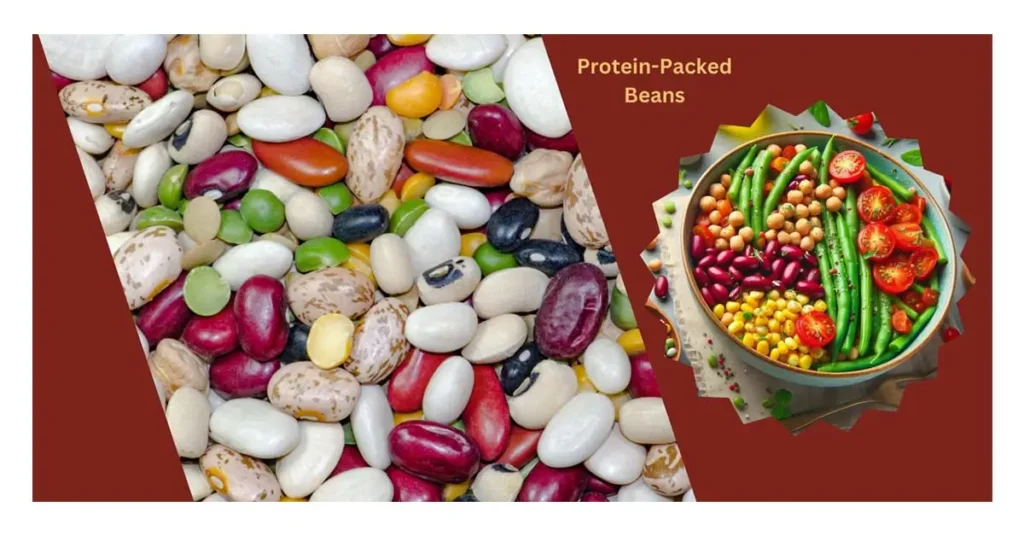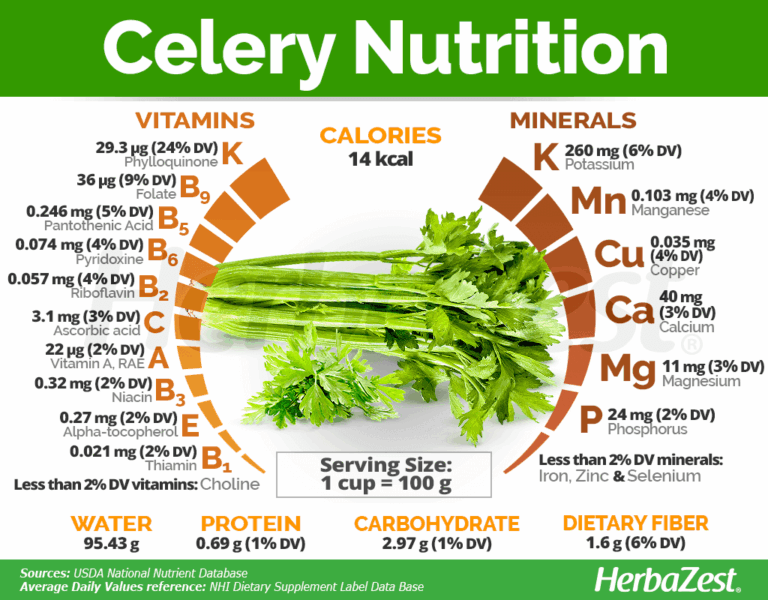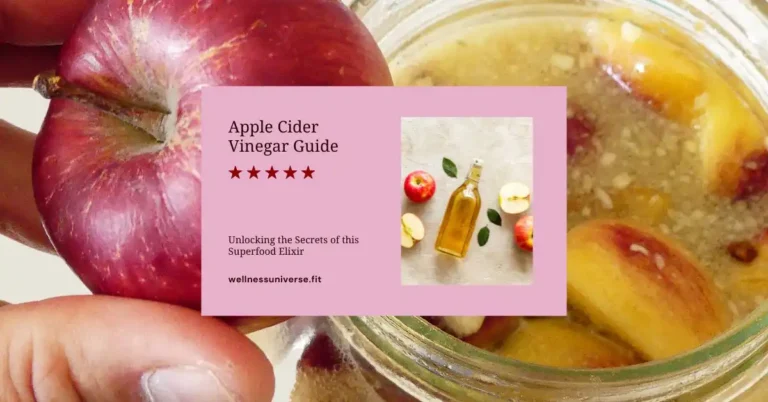Fueling Muscle and Fullness: The Best Beans to Add to Your Meals Today
In the grand tapestry of human sustenance, where fads flicker and dietary trends ebb and flow, there exists an unassuming hero, a humble seed that has nourished civilizations for millennia: the bean. Often relegated to the periphery of modern plates, dismissed as a mere side dish, or worse, feared for its flatulent reputation, the bean is ripe for a renaissance. For the discerning individual seeking to optimize their physical prowess, manage their weight with sustainable satiety, and fortify their overall health, the bean stands as an unparalleled ally.
This isn’t merely a nutritional exposé; it’s an invitation to embark on a culinary and scientific journey, a story woven through ancient fields, modern laboratories, and vibrant kitchens. We will delve deep into the multifaceted power of beans, uncovering their profound impact on muscle synthesis, sustained fullness, and a myriad of health benefits. We will explore the diverse cast of characters in the bean family, highlighting the best among them to integrate into your daily regimen. Prepare to rediscover the bean, not just as food, but as a foundational pillar for a stronger, healthier, and more satisfying life.
The Unsung Hero’s Grand Entrance: Beyond the Humble Shell
Imagine a food so complete, so efficient, that it could fuel the armies of ancient empires, sustain remote indigenous communities, and, in today’s world, provide a sustainable, affordable, and potent answer to many of our modern dietary challenges. This is the bean. Its story is one of resilience, adaptation, and unwavering nutritional generosity.
For the knowledgeable audience, the allure of beans extends far beyond their simple presence on a plate. It’s about understanding the intricate biochemical dance they orchestrate within our bodies, the historical legacy they carry, and the sustainable future they promise. We’re talking about a nutrient-dense powerhouse that offers a compelling combination of plant-based protein, complex carbohydrates, an abundance of fiber, and a treasure trove of micronutrients. These aren’t just "good for you" foods; they are strategic ingredients for anyone serious about physical performance, metabolic health, and long-term well-being.
Deconstructing the Bean: A Symphony of Macronutrients and Micronutrients
To truly appreciate the bean, we must first dissect its nutritional architecture. It’s a marvel of natural engineering, packed with components that directly address the dual goals of muscle building and sustained fullness.
1. The Protein Powerhouse: Building Blocks for Muscle Synthesis
When we speak of muscle, protein immediately comes to mind. While animal proteins often take center stage in this discussion, the intelligent integration of plant-based proteins, particularly from beans, offers a compelling alternative and complement.
Beans are an excellent source of plant-based protein, crucial for muscle repair, growth, and overall lean mass maintenance. What makes bean protein so effective?
- Amino Acid Profile: While most beans are considered "incomplete" proteins because they are typically lower in one or two essential amino acids (methionine and tryptophan being the most common limiting amino acids in legumes), this is a nuance often misunderstood. The human body maintains an amino acid pool, meaning that if you consume complementary proteins (like grains, which are rich in methionine) throughout the day, your body efficiently combines them to form complete proteins. Think of the classic pairing of rice and beans, a staple in many cultures – a nutritional masterpiece engineered by centuries of practical wisdom.
- Protein Digestibility Corrected Amino Acid Score (PDCAAS) and Digestible Indispensable Amino Acid Score (DIAAS): For the knowledgeable, these metrics are key. While beans might score slightly lower than some animal proteins on PDCAAS, their overall amino acid profile, especially when combined with other plant foods, is highly effective. The emerging DIAAS, which accounts for amino acid digestibility in the small intestine, further refines our understanding, often showing legumes to be highly valuable sources of digestible amino acids.
- Lean Mass and Satiety: The protein in beans contributes significantly to satiety, slowing digestion and promoting a feeling of fullness. This is critical for weight management, as it helps reduce overall caloric intake without feeling deprived. Furthermore, adequate protein intake is essential for preventing muscle catabolism (breakdown) during periods of calorie restriction, helping to preserve precious lean muscle mass.
2. Fiber for Fullness: The Gut-Brain Connection
Perhaps the most celebrated, yet often underestimated, component of beans is their fiber content. Beans are exceptionally rich in both soluble and insoluble fiber, each playing a distinct yet complementary role in promoting fullness and overall health.
- Soluble Fiber: This type of fiber dissolves in water, forming a gel-like substance in the digestive tract. This gel slows down gastric emptying, meaning food stays in your stomach longer, contributing to a prolonged feeling of fullness. Soluble fiber also plays a crucial role in blood sugar regulation, blunting the post-meal glucose spike and promoting more stable energy levels, which in turn helps prevent cravings and energy crashes. Furthermore, soluble fiber is a powerful prebiotic, feeding beneficial gut bacteria.
- Insoluble Fiber: This fiber does not dissolve in water but adds bulk to stool, promoting regular bowel movements and preventing constipation. While it doesn’t form a gel, its physical presence contributes to gastric distension, signaling satiety to the brain.
- Hormonal Signaling: The fibers in beans, particularly soluble fiber, influence the release of gut hormones that signal satiety to the brain. Hormones like cholecystokinin (CCK), peptide YY (PYY), and glucagon-like peptide-1 (GLP-1) are all stimulated by the presence of food in the gut, and fiber-rich foods like beans are particularly effective at triggering these signals, leading to a profound and lasting sense of fullness.
- Gut Microbiome and SCFAs: Beyond satiety, the prebiotic fiber in beans nourishes the trillions of microorganisms residing in our gut. These beneficial bacteria ferment the fiber, producing short-chain fatty acids (SCFAs) like butyrate, propionate, and acetate. Butyrate, in particular, is a primary fuel source for colon cells and plays a critical role in maintaining gut barrier integrity, reducing inflammation, and potentially influencing metabolism and appetite regulation systemically. A healthy gut microbiome is increasingly recognized as a cornerstone of overall health, impacting everything from immune function to mood.
3. Micronutrient Treasure Trove: Beyond the Big Two
While protein and fiber are the headline acts, the bean’s supporting cast of micronutrients is equally impressive and vital for muscle function, energy metabolism, and overall vitality.
- Iron: Crucial for oxygen transport in the blood, essential for energy production and preventing fatigue. Plant-based iron (non-heme) is absorbed more efficiently when consumed with vitamin C.
- Magnesium: Involved in over 300 enzymatic reactions, including muscle contraction, nerve function, blood glucose control, and protein synthesis – all critical for athletic performance and recovery.
- Folate (Vitamin B9): Essential for cell division and DNA synthesis, vital for tissue repair and growth, including muscle tissue.
- Potassium: An electrolyte vital for fluid balance, nerve signals, and muscle contractions.
- Zinc: Important for immune function, wound healing, and protein synthesis.
- Antioxidants and Phytochemicals: Beans are packed with various antioxidants and polyphenols, such as flavonoids and anthocyanins (especially in black and kidney beans), which combat oxidative stress, reduce inflammation, and protect cells from damage – important for recovery after intense exercise.
The Bean’s Journey Through Time: A Story of Survival and Sustenance
To truly appreciate beans, one must understand their profound historical and cultural significance. Their story isn’t just about nutrition; it’s about human ingenuity, resilience, and the very foundation of civilization.
From the ancient Andean civilizations that domesticated the common bean (Phaseolus vulgaris) over 7,000 years ago, to the Mesoamerican cultures that revered black beans as a dietary staple alongside corn and squash, beans have been intertwined with human development. They were cultivated in the Fertile Crescent (lentils, chickpeas), across Asia (mung beans, soybeans), and adapted to diverse climates and culinary traditions.
Known often as the "poor man’s meat," beans provided essential protein and calories when animal sources were scarce or expensive. Their ability to be dried and stored for long periods made them an invaluable food security crop, ensuring sustenance through harsh winters or lean seasons. This historical context underscores their reliability and robust nutritional profile – they weren’t just a choice; they were often a necessity for survival and thriving.
Moreover, beans play a vital role in sustainable agriculture. As legumes, they possess the remarkable ability to fix atmospheric nitrogen into the soil through a symbiotic relationship with specific bacteria in their root nodules. This natural fertilization reduces the need for synthetic nitrogen fertilizers, which are energy-intensive to produce and can contribute to environmental pollution. Their low water footprint compared to animal proteins further solidifies their position as a food for a sustainable future.
The Best Beans for Muscle & Fullness: A Deep Dive into the Family Album
While all beans offer a compelling nutritional package, some stand out for their particular strengths regarding muscle support and satiety. Let’s meet the stars of our show:
1. Black Beans (Frijoles Negros)
- Nutritional Profile: High in protein (around 15g per cup cooked), fiber (15g per cup), and rich in antioxidants, particularly anthocyanins, which give them their dark hue. Excellent source of folate, magnesium, and iron.
- Muscle & Fullness Benefits: The robust protein and fiber content make black beans incredibly satiating. Their anthocyanins offer anti-inflammatory benefits, crucial for post-exercise recovery.
- Culinary Uses: A staple in Latin American cuisine. Perfect in tacos, burritos, salads, soups, stews, and as a hearty side dish. Their earthy flavor pairs well with spices like cumin and chili powder. Can also be pureed into dips or even baked goods (like brownies for added moisture and fiber).
2. Kidney Beans (Rajma, Phaseolus vulgaris)
- Nutritional Profile: Boast an impressive protein count (approx. 15g per cup cooked) and substantial fiber (13g per cup). Rich in iron, folate, magnesium, and potassium.
- Muscle & Fullness Benefits: Their high protein and complex carbohydrate content provide sustained energy and muscle support. The fiber ensures prolonged satiety and stable blood sugar. The iron is vital for oxygen transport to working muscles.
- Culinary Uses: Famous in chili con carne, but also excellent in salads, curries (like Indian Rajma), and stews. Their firm texture holds up well to longer cooking times.
3. Chickpeas (Garbanzo Beans, Cicer arietinum)
- Nutritional Profile: A balanced powerhouse with about 15g of protein and 12g of fiber per cup cooked. Also a great source of folate, iron, phosphorus, and zinc.
- Muscle & Fullness Benefits: The balanced macronutrient profile makes chickpeas a highly effective satiety agent. Their protein supports muscle maintenance and growth, while fiber keeps hunger at bay.
- Culinary Uses: Incredibly versatile. The star of hummus and falafel. Excellent roasted for a crunchy snack, added to salads, curries, stews, or even blended into "chickpea tuna" or vegan omelets (using chickpea flour). Their slightly nutty, earthy flavor is widely appealing.
4. Lentils (Lens culinaris)
- Nutritional Profile: Among the highest in protein (18g per cup cooked, depending on type) and fiber (16g per cup). Also rich in iron, folate, manganese, and thiamine. Different varieties (green, brown, red, black/Beluga) have slightly varied profiles.
- Muscle & Fullness Benefits: Lentils are muscle-building champions, with a very high protein-to-calorie ratio. Their substantial fiber content makes them incredibly filling, aiding in weight management and preventing overeating. They are also unique for their relatively quick cooking time compared to larger beans.
- Culinary Uses: Red lentils cook down quickly and are ideal for creamy soups and dals. Green and brown lentils hold their shape better, perfect for salads, stews, veggie burgers, and as a meat substitute in dishes like shepherd’s pie. Black Beluga lentils have a beautiful, caviar-like appearance and firm texture.
5. Pinto Beans (Phaseolus vulgaris)
- Nutritional Profile: Offer around 15g of protein and 15g of fiber per cup cooked. Good source of folate, manganese, and phosphorus.
- Muscle & Fullness Benefits: Their robust protein and fiber content ensures excellent satiety and muscle support. The complex carbohydrates provide sustained energy.
- Culinary Uses: A cornerstone of Mexican and Southwestern American cuisine. Essential for refried beans, also great in burritos, soups, and stews. Their creamy texture when cooked makes them highly palatable.
6. Navy Beans (Haricot Beans, Phaseolus vulgaris)
- Nutritional Profile: Provide about 15g of protein and a remarkable 19g of fiber per cup cooked, making them one of the highest-fiber beans. Also a good source of iron, magnesium, and folate.
- Muscle & Fullness Benefits: The exceptionally high fiber content makes navy beans outstanding for promoting fullness and digestive health. Their protein contributes to muscle maintenance.
- Culinary Uses: Famous for Boston baked beans, but also excellent in hearty soups (like Senate Bean Soup), stews, and casseroles. They cook down to a very creamy consistency.
7. Edamame (Soybeans, Glycine max)
- Nutritional Profile: Unique among beans for being a complete protein, meaning they contain all nine essential amino acids in sufficient quantities (18g protein per cup shelled). Also high in fiber (8g per cup), healthy fats (omega-3s), and isoflavones.
- Muscle & Fullness Benefits: As a complete protein, edamame is an exceptional plant-based source for muscle building and repair. The combination of protein, fiber, and healthy fats provides sustained energy and significant satiety. Isoflavones offer additional health benefits, including antioxidant properties.
- Culinary Uses: Often served steamed in the pod as an appetizer or snack. Shelled edamame can be added to salads, stir-fries, rice bowls, or pureed into dips.
8. Mung Beans (Vigna radiata)
- Nutritional Profile: Approximately 14g of protein and 15g of fiber per cup cooked. Rich in folate, manganese, magnesium, and B vitamins.
- Muscle & Fullness Benefits: Mung beans are known for their easy digestibility compared to other legumes, making them a gentler option for some. Their excellent protein and fiber profile ensures muscle support and lasting satiety.
- Culinary Uses: Popular in Asian cuisine. Used in soups, stews, dals, and as sprouts in salads or sandwiches. They have a slightly sweet, earthy flavor and a soft texture when cooked.
Maximizing Bean Benefits: Culinary Wisdom & Practical Tips
Integrating beans into your diet effectively requires a bit of knowledge and a dash of culinary creativity. For the knowledgeable audience, this isn’t just about throwing beans in a pot; it’s about optimizing their nutritional availability and minimizing potential discomfort.
1. Preparation Prowess: Soaking and Cooking
- Soaking Dried Beans: This is crucial for two main reasons. Firstly, it significantly reduces cooking time. Secondly, and more importantly for digestive comfort, soaking helps to reduce the content of oligosaccharides (complex sugars like raffinose and stachyose) that are poorly digested by humans and can lead to gas and bloating. Soaking for 8-12 hours, draining, and rinsing thoroughly before cooking is highly recommended.
- Cooking Methods:
- Stovetop: Slow, gentle cooking after soaking ensures even cooking and creamy texture.
- Pressure Cooker: Dramatically reduces cooking time and is highly effective at breaking down some of the complex carbohydrates, potentially aiding digestion.
- Canned Beans: A convenient option. Always rinse canned beans thoroughly to remove excess sodium and some of the flatulence-inducing compounds.
2. Reducing Discomfort: A Gentle Introduction
The "musical fruit" reputation of beans stems from the fermentation of oligosaccharides by gut bacteria. While this fermentation produces beneficial SCFAs, it can also produce gas.
- Gradual Introduction: Start with smaller portions and gradually increase your intake to allow your gut microbiome to adapt.
- Thorough Cooking: Undercooked beans are more likely to cause digestive issues.
- Digestive Enzymes: Over-the-counter products containing alpha-galactosidase (e.g., Beano) can help break down oligosaccharides before they reach the colon.
- Sprouting: Sprouting beans can further reduce oligosaccharides and increase the bioavailability of some nutrients.
3. Complementary Pairings: Nutritional Synergy
- Pair with Grains: The classic combination of beans and rice (or quinoa, corn, oats) creates a complete protein profile, ensuring all essential amino acids are consumed.
- Add Vitamin C: Pairing beans with vitamin C-rich foods (e.g., tomatoes, bell peppers, citrus) significantly enhances the absorption of non-heme iron from beans.
- Healthy Fats: A drizzle of olive oil or avocado can enhance the absorption of fat-soluble vitamins and add to satiety.
- Spices and Herbs: Incorporate digestive-friendly spices like ginger, cumin, coriander, and turmeric, which can also add flavor depth.
4. Integration Strategies: Making Beans a Daily Habit
- Breakfast: Add beans to scrambled eggs, make a savory bean toast, or blend into a smoothie (white beans have a neutral flavor).
- Lunch: Toss chickpeas or lentils into salads, make a hearty bean soup, or spread mashed beans on a sandwich instead of processed meats.
- Dinner: Use beans as a base for chili, stews, curries, tacos, burritos, or as a protein-rich side dish. Explore bean-based pasta alternatives.
- Snacks: Roast chickpeas for a crunchy snack, make hummus or bean dips with crudités, or enjoy edamame.
- Baking: Pureed black beans or white beans can be surprisingly effective in brownies, muffins, or even pizza crusts, adding moisture, fiber, and protein without altering the taste significantly.
5. Dispelling Myths: Antinutrients in Context
A knowledgeable audience will be aware of the concept of "antinutrients" like phytates (phytic acid) and lectins found in beans. It’s crucial to put this into perspective:
- Phytates: While phytates can bind to minerals (like iron and zinc), reducing their absorption, the traditional preparation methods of soaking, cooking, and sprouting significantly reduce phytate levels. Furthermore, phytates are not universally detrimental; they possess antioxidant properties and may even have anti-cancer effects. The overall nutritional benefits of beans far outweigh any minor reduction in mineral bioavailability when properly prepared.
- Lectins: Some raw or undercooked beans contain lectins (e.g., phytohaemagglutinin in kidney beans) that can cause digestive distress. However, thorough cooking completely deactivates these lectins, rendering beans safe and beneficial. This is why it’s critical to never consume raw or undercooked beans.
The Future of Food: Beans as a Cornerstone
As we navigate an era demanding more sustainable and health-conscious food choices, the bean emerges not just as a historical artifact, but as a beacon for the future. Its low environmental impact – requiring less land, water, and fertilizer than animal proteins – positions it as a critical component of global food security and climate-friendly diets.
For the individual, embracing beans is a personal revolution. It’s a commitment to nourishing your body with high-quality, whole foods that support muscle vitality, ensure sustained energy, and foster a healthy gut. It’s about eating intelligently, sustainably, and deliciously.
Conclusion: Embrace the Bean Revolution
The story of the bean is one of quiet power, enduring resilience, and profound nutritional generosity. From its ancient origins as a cornerstone of human survival to its modern potential as a solution for health and sustainability, the bean consistently delivers.
For those dedicated to fueling their muscles, achieving lasting fullness, and optimizing their overall well-being, the message is clear: the bean is not just an option; it is an imperative. Its unparalleled blend of muscle-building protein, satiating fiber, and a spectrum of vital micronutrients makes it a non-negotiable addition to a truly knowledgeable and health-conscious diet.
So, cast aside any preconceived notions. Embrace the black bean, the kidney bean, the chickpea, and their diverse kin. Experiment with their myriad culinary applications. Learn to prepare them with intention and care. In doing so, you won’t just be adding a simple ingredient to your meals; you’ll be inviting a legacy of health, vitality, and satisfaction onto your plate. The bean revolution is here, and your body, your palate, and the planet will thank you for joining it.







